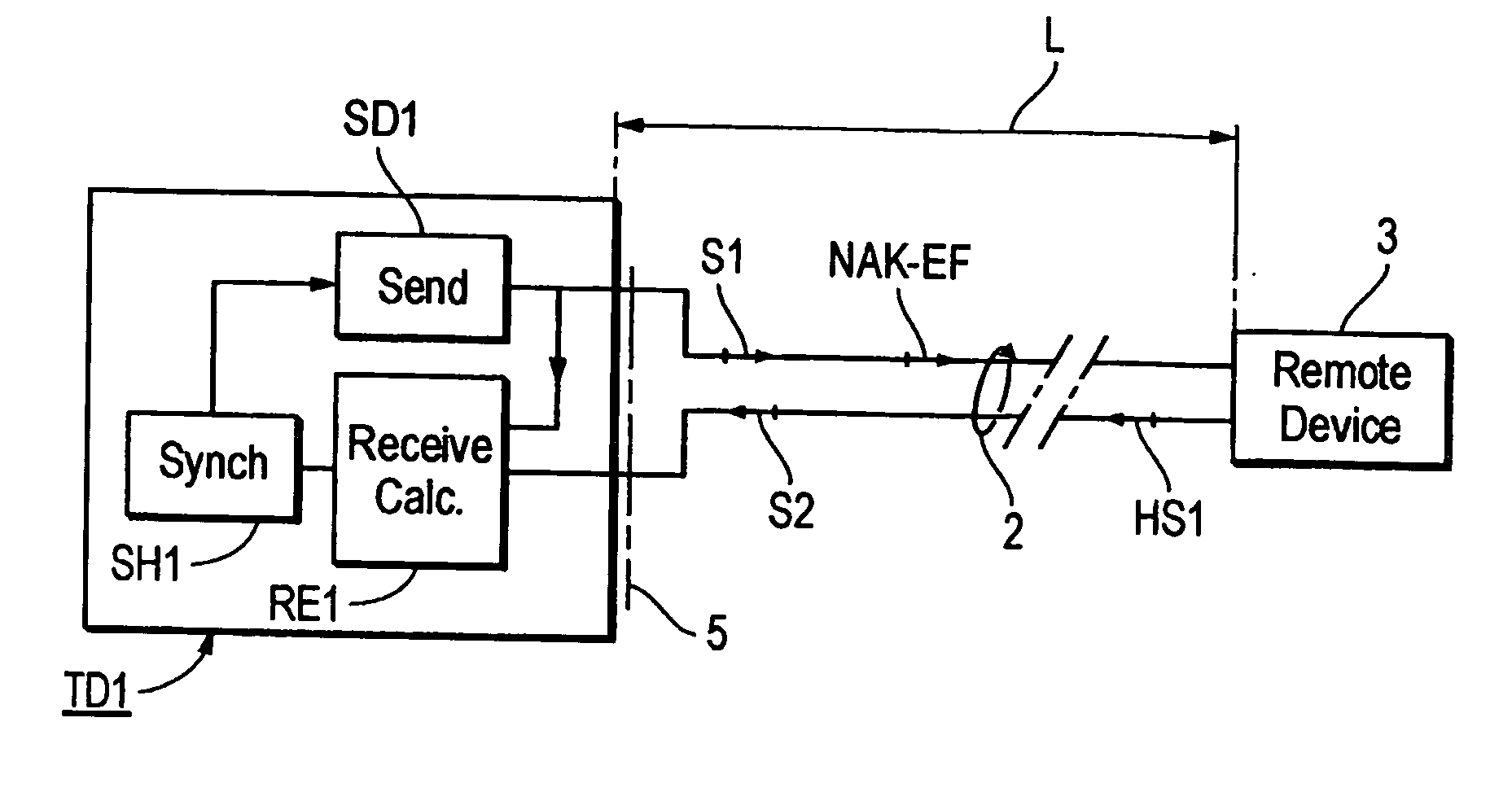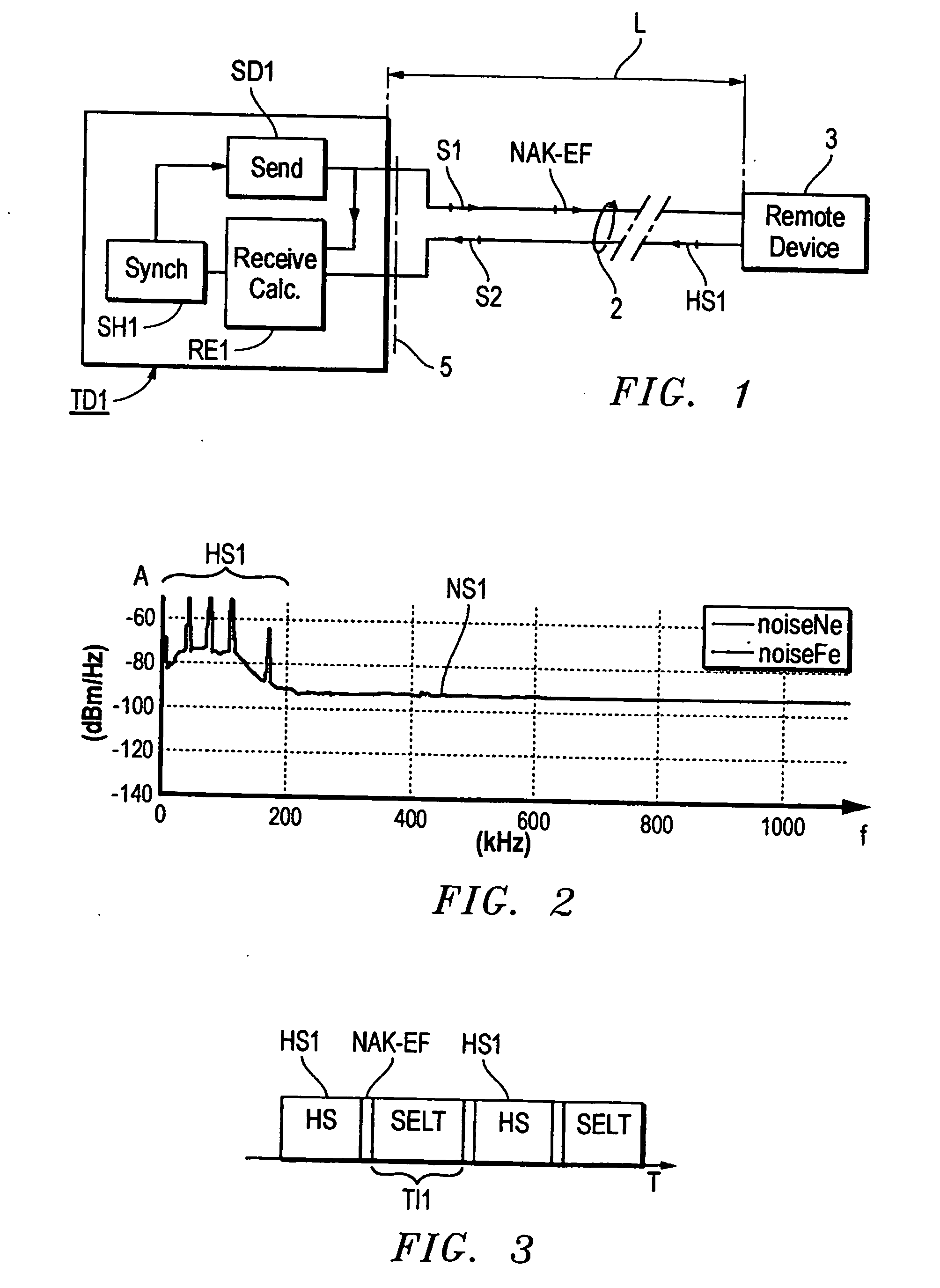Method and arrangement for loop test of a disturbed line
- Summary
- Abstract
- Description
- Claims
- Application Information
AI Technical Summary
Benefits of technology
Problems solved by technology
Method used
Image
Examples
Embodiment Construction
[0030]FIG. 1 shows a simple block schematic over a test device TD1 at a central office, connected to a remote device 3 at a customer's premises via a digital subscriber line 2 (DSL). The line is seen from the end of the test device, and this end is called the near end of the line while the other end at the device 3 is denoted as the remote end. The line 2 is a conventional copper line of a length L, which has certain properties, such as signal attenuation in different frequency ranges. The test device has a sending device SD1, a receiving device RE1 and a synchronizing device SH1. The latter is connected to the sending device SD1, which in turn is connected to the line 2 and to the receiving device RE1.
[0031] As mentioned above it is essential for a network operator to be able to utilize the already existing copper line 2 for the broadband transmission. The operator therefore must know the line properties, such as the length L, signal attenuation and transmission capacity. These pr...
PUM
 Login to View More
Login to View More Abstract
Description
Claims
Application Information
 Login to View More
Login to View More - R&D
- Intellectual Property
- Life Sciences
- Materials
- Tech Scout
- Unparalleled Data Quality
- Higher Quality Content
- 60% Fewer Hallucinations
Browse by: Latest US Patents, China's latest patents, Technical Efficacy Thesaurus, Application Domain, Technology Topic, Popular Technical Reports.
© 2025 PatSnap. All rights reserved.Legal|Privacy policy|Modern Slavery Act Transparency Statement|Sitemap|About US| Contact US: help@patsnap.com



